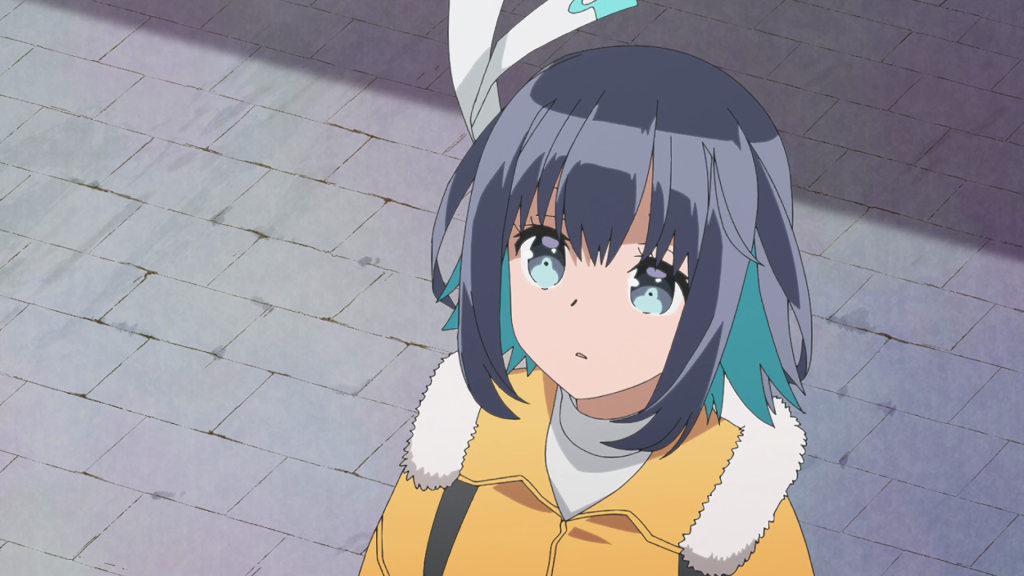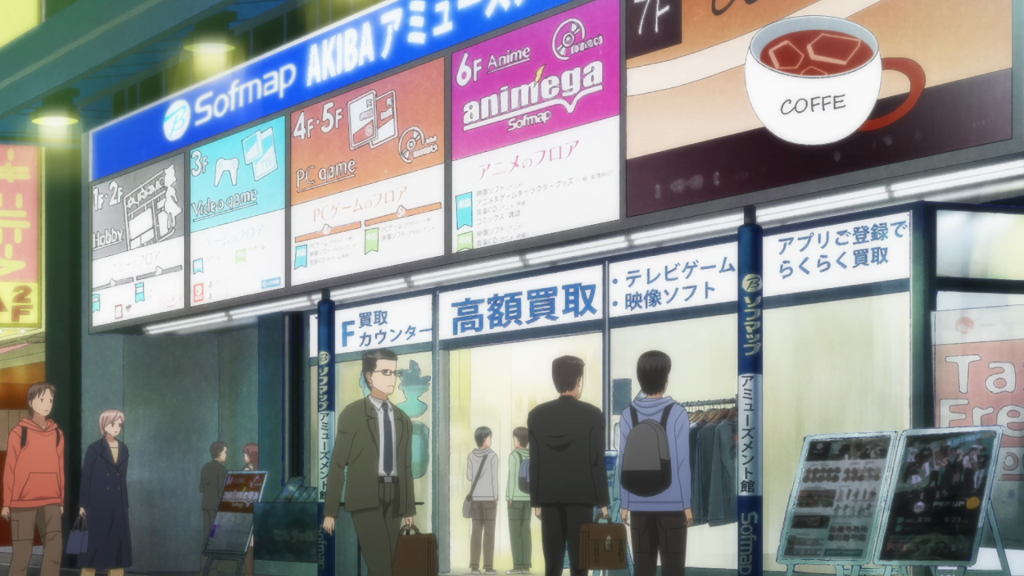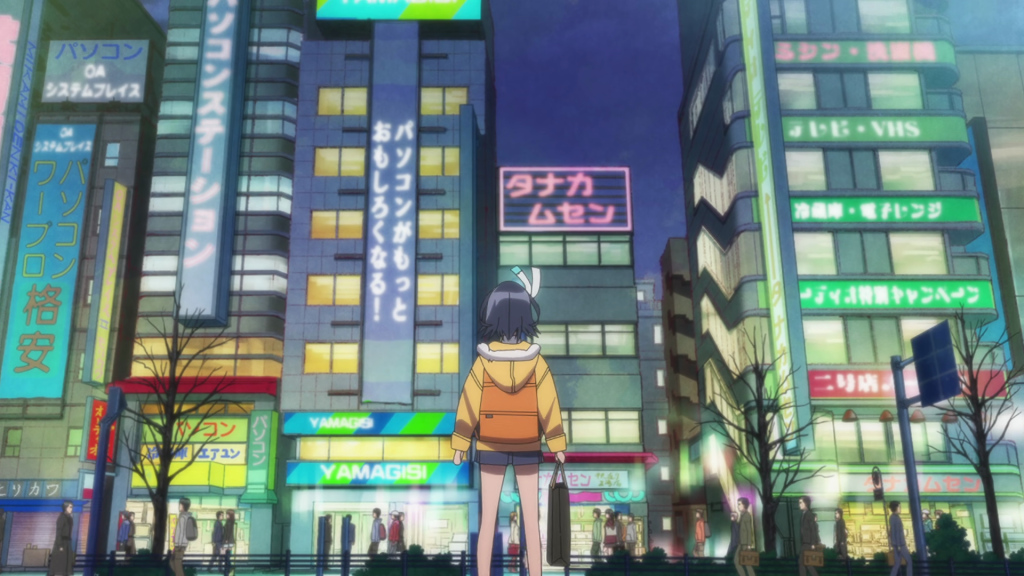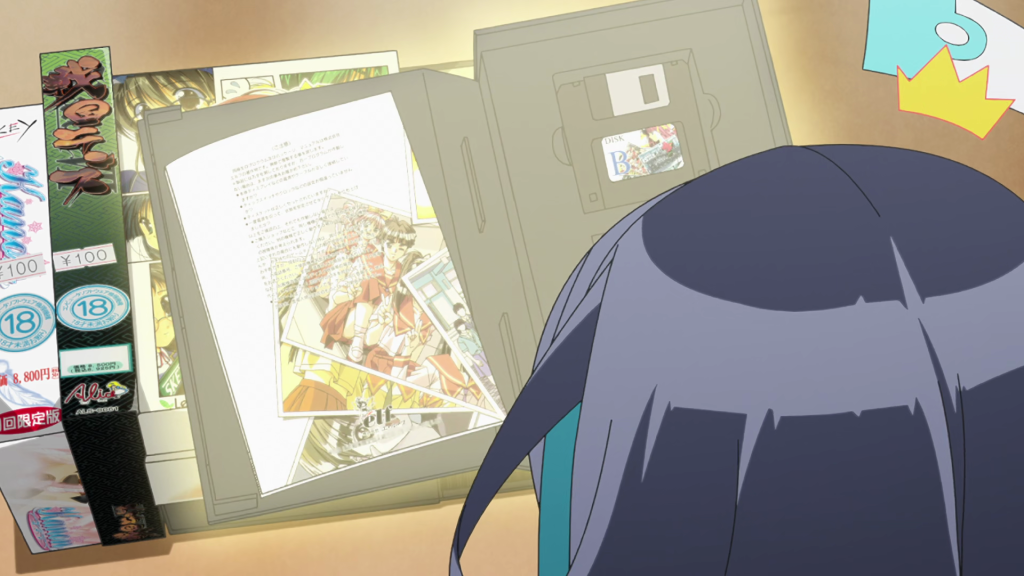Pros
- Strangely engaging story once the real plot is revealed
- Includes time travel
Cons
- Some weird elements that aren’t quite explained and have no real significance
- Some filler episodes
16bit Sensation: Another Layer Review
16bit Sensation: Another Layer is an anime series that’s easy to pass on because its premise about a young female professional bishoujo artist who wants to make her own video game doesn’t really sound like an exciting, action-packed adventure.
But throw in some time traveling and all of the paradoxes that time traveling involves, and there’s a more interesting story here than just a young professional chasing her dream.
Anyone who has read any time travel science fiction knows that the greatest danger of time travel aside from getting lost in time is inadvertently changing the future and affecting one’s present.
Konoha dreams of being something more than just an assistant animator. She has her own portfolio of beautiful girls who she dreams of someday putting into a game. But as an assistant, she has no voice in a team of more experienced workers.

One day, Konoha’s love of bishoujo games leads her to a cheap and strange used gamestore with old bishoujo games, so of course she needs to buy the classics. Like all strange shops that mysteriously appear, this one disappears, never to be seen again. But of course Konoha still has the games she purchased from this shop.
It turns out that when opened, these games transport whoever opened it to the year the game was published. Thrust back into the 1980s and 1990s, Konoha is finally able to chase her dream.

Various plot devices like disabling Konoha’s tablet are enforced so as to keep her from “cheating” in the past with advanced technology, but these restrictions are later eased because of the introduction of a pair of strange aliens and their dog.
These aliens chase or consume the emotions that come from games and the hard work and emotions that developers put into their games. That’s why they’re attracted to Konoha, whose games are bursting with emotion from their time of reference. However, it’s unclear as to the significance of these aliens except perhaps to illustrate that in some far future, Konoha is successful.

Once the story picks up, Konoha’s travels to the past and the consequences of her decisions make the story more interesting. Other paradoxes like meeting oneself or getting money to survive are kind of ignored in favor of pursuing strictly the story.
It’s almost inevitable that any traveler to the past will affect his own timeline. Konoha is no exception, only her meddling in the past by developing an amazing game with then state-of-the-art or novel game mechanics thrusts her games into the spotlight, forever altering the future of her beloved Akihabara and the state of the gaming industry not only in Japan, but throughout the world as well.

That’s when the real story begins: how can Konoha return her timeline back to its original form? The answer is obvious: develop yet another groundbreaking game that will interrupt the current timeline and force it back on track.
So maybe the premise of the story doesn’t quite make sense, nor does the presence of the aliens quite make sense. But seeing how her presence in the past changes the future is a little intriguing.
16bit Sensation: Another Layer is a fun anime that imagines how an opportunity for one character’s pursuit of her dream can change her future for the worse. Perhaps the message is that people shouldn’t pursue their dreams or they risk losing the world they live in. Or perhaps the pursuit of one’s dream is more important the consequences of its achievement. Or maybe it’s just a fun series to watch that is a nice break from the constant barrage of the multitude of variations on isekai anime.
Read reviews of other anime below.



